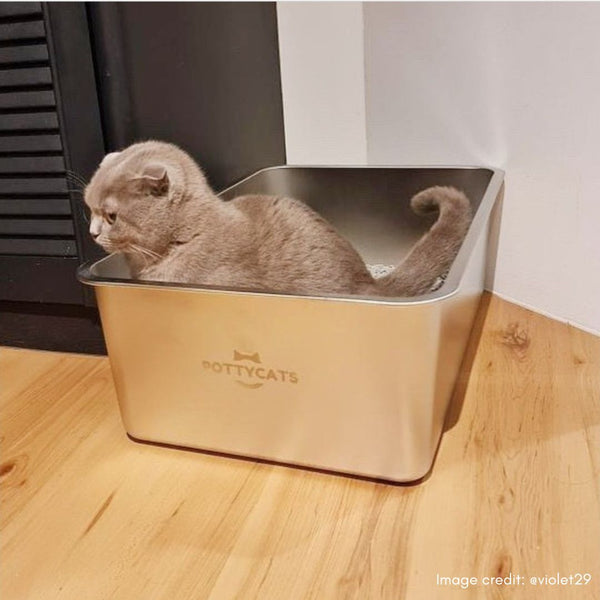
Just like humans, cats can experience respiratory discomfort — and it can be worrying when you suddenly notice your feline coughing, wheezing, or breathing unusually. Two of the most common culprits are cat cough and cat asthma, and while they may look similar, they aren’t the same. Understanding the difference is crucial so that your cat receives the right care early, especially because asthma is a chronic and sometimes life-threatening condition.
In this blog, we’ll explore the differences, the symptoms to look out for, and how choosing the right type of cat litter plays a surprising yet important role in maintaining healthy feline airways.
🐱 Cat Cough: What It Is
A cat cough is usually a temporary reflex designed to clear the airways. It might be caused by:
-
Respiratory infections (viral or bacterial)
-
Allergens or irritants (dust, smoke, perfumes)
-
Hairballs
-
Foreign objects
-
Post-nasal drip
-
Mild allergies
Typical Symptoms of Cat Cough
-
Dry hacking or short cough bursts
-
Gagging (sometimes mistaken for hairball retching)
-
Occasional coughing but normal breathing between episodes
-
Usually temporary and resolves once irritant or infection is gone
If the cough lasts more than 2–3 days, increases in frequency, or is paired with fever or nasal discharge, it’s best to consult a vet.
😿 Cat Asthma: A Serious Chronic Condition
Feline asthma is an inflammatory respiratory disease where airway muscles tighten and narrow, making breathing difficult. It can be triggered by environmental allergens and stress.
Common Asthma Symptoms
-
Wheezing or whistling sound
-
Persistent cough that looks like they are “trying to cough up a hairball” but nothing comes out
-
Open-mouth breathing or panting
-
Rapid breathing (> 40 breaths per minute at rest)
-
Blue or grey gums (emergency)
Cat asthma cannot be cured, but it can be managed through veterinary care and an allergen-reduced lifestyle.
🆚 Quick Comparison Chart
| Feature | Cat Cough | Cat Asthma |
|---|---|---|
| Duration | Short-term | Chronic & recurring |
| Breathing | Normal between coughs | Often labored or wheezy |
| Trigger | Infection, irritants, hairballs | Allergens, stress, environmental factors |
| Emergency Risk | Low | High (can be deadly) |
| Treatment | Treat cause & monitor | Long-term vet management |
🏡 How to Manage & Reduce Triggers at Home
-
Visit a veterinarian for diagnosis and medication
-
X-rays, blood tests, or bronchoscopy may be needed.
-
Asthma treatment often includes bronchodilators or steroids (inhaled preferred).
-
-
Remove airborne irritants
-
No smoking indoors
-
Avoid aerosol sprays and strong fragrances
-
Keep house well ventilated
-
-
Monitor humidity
-
Use air purifiers if needed
-
Too dry or dusty environments worsen symptoms
-
🧴 The Role of Cat Litter in Respiratory Health
Many cat owners don’t realize that litter dust is one of the most common and overlooked asthma triggers in cats. Traditional clumping clay litter often produces fine dust particles that cats inhale while digging, and scented types add extra chemical irritants.
How to Choose the Right Litter
Look for:
✔ Low-dust or dust-free formulations
✔ Natural or biodegradable materials (pine, tofu, wood, paper, corn)
✔ Unscented varieties
✔ Fast-absorbing and low-tracking texture
Avoid:
✘ Scented or perfumed litters
✘ High-dust clumping clay
✘ Chemical additives
Switching to a natural, low-dust litter like Pottycats Natural Cat Litter in Original or Charcoal can drastically reduce coughing and wheezing episodes, especially in asthma-prone cats. Some options also contain antibacterial properties, helping maintain hygiene without harsh chemicals.
🏁 Final Thoughts
Cat cough and feline asthma may appear similar, but the difference is critical — one is usually temporary, while the other is a chronic condition that needs long-term care. Early detection, vet guidance, and a low-irritant home environment, especially choosing the right cat litter, can make a dramatic difference in your cat’s breathing and overall quality of life.
If your cat shows persistent breathing issues, always seek veterinary care immediately.
Your fur baby depends on you to help them breathe easy. 💛



